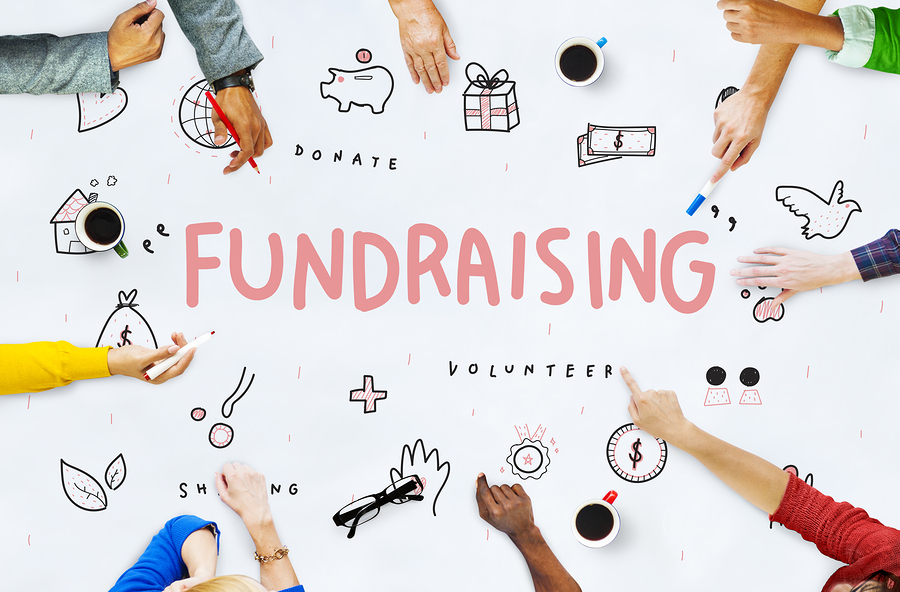Online Fundraising: Proven Techniques to Elevate More Funds for Your Nonprofit
Online Fundraising: Proven Techniques to Elevate More Funds for Your Nonprofit
Blog Article
The Function of Community Engagement in Nonprofit Fundraising: Structure Lasting Relationships for Sustainable Assistance
Neighborhood interaction is significantly recognized as an essential element of effective not-for-profit fundraising. The methods and techniques used to engage communities vary widely, increasing crucial inquiries concerning performance and impact.
Understanding Neighborhood Interaction
Area involvement is an essential part of successful nonprofit fundraising initiatives. Nonprofits must identify crucial stakeholders-- such as neighborhood members, neighborhood services, and other companies-- to produce reliable interaction techniques.
Reliable neighborhood engagement is based on active listening and responsiveness to the needs and passions of the neighborhood. This process entails getting feedback, recognizing neighborhood dynamics, and ensuring that the company's objective lines up with regional priorities. Engaging the neighborhood can take various types, including public conferences, volunteer chances, and partnership initiatives, each created to urge involvement and financial investment in the organization's goals.
In addition, neighborhood involvement ought to be come close to as an ongoing dialogue instead than a single effort. By promoting a comprehensive environment where neighborhood voices are listened to and valued, nonprofits can construct a strong foundation for future fundraising undertakings. Ultimately, a deep understanding of area engagement equips companies to develop authentic links that enhance their general effectiveness and sustainability.
Advantages of Strong Relationships
Strong partnerships created through community interaction return countless benefits for nonprofit fundraising efforts. Firstly, these relationships foster trust and reliability, necessary parts in motivating benefactors to add. When potential supporters see a nonprofit actively included in their neighborhood, they are a lot more most likely to think in its goal and influence.

Furthermore, these relationships promote efficient communication. Nonprofits can take advantage of their links to share tales of impact, updates, and requires, making sure that supporters stay educated and involved. This open line of communication not just enhances bonds yet also urges word-of-mouth promotion, expanding the not-for-profit's reach.
Lastly, solid community connections can bring in new partners and enrollers. People and businesses are a lot more likely to align with companies that show meaningful neighborhood participation, providing added sources and support that can dramatically enhance fundraising capacities. Thus, cultivating robust partnerships via neighborhood involvement is integral to a nonprofit's long-lasting fundraising success.
Techniques for Efficient Interaction
Exactly how can nonprofits properly involve their areas to boost fundraising initiatives? Developing targeted strategies is important for fostering meaningful links. Initially, leveraging social media systems allows organizations to share their goal dynamically and interactively, getting to a wider audience. Regular updates, involving web content, and calls-to-action can galvanize area passion and participation.
Second, organizing area occasions, such as workshops, volunteer chances, or fundraising drives, assists in face-to-face interaction, permitting nonprofits to display their effect and efforts. These occasions not only raise funds but also grow connections and allow area participants to engage straight with the cause.
Third, implementing personalized interaction methods can enhance involvement. Tailoring messages to particular donor segments based upon interests and previous contributions promotes a sense of belonging and financial investment in the organization's objective.
Lastly, producing collaborations with regional organizations and neighborhood leaders can intensify outreach efforts. Collective initiatives can improve presence and integrity, demonstrating a cumulative dedication to the community's wellness. By incorporating these techniques, nonprofits can construct long lasting partnerships that enhance fundraising efforts and drive lasting assistance.
Measuring Interaction Success
While involving the community is critical for successful nonprofit fundraising, gauging the effectiveness of these interaction initiatives is equally essential. Developing clear metrics permits organizations to evaluate exactly how well they are attaching with their audience and achieving their fundraising objectives. Trick performance signs (KPIs) such as contributor retention prices, volunteer engagement degrees, and engagement on social networks systems give tangible data for assessment.

Routinely analyzing these metrics makes it possible for organizations to pivot their strategies when needed, making sure that community interaction remains straightened find out this here with their overall goal. In addition, sharing these results with stakeholders cultivates transparency and builds depend on, motivating further area involvement. Inevitably, a durable measurement structure not just notifies future fundraising initiatives however additionally enhances the partnership in between the not-for-profit and its supporters, preparing for sustainable success.
Study in Community Effect
Countless case research studies highlight the extensive influence that area involvement can carry nonprofit fundraising success. One significant example is the "Something to chew on" effort, where a local food bank partnered with institutions and businesses to host neighborhood suppers. These occasions not just raised funds yet additionally cultivated a sense of belonging among participants, significantly raising donor retention rates.
One more engaging instance is the "Eco-friendly Spaces Job," which entailed local residents in the revitalization of city parks. This campaign not just amassed financial backing from neighborhood services however additionally cultivated a volunteer base that added to ongoing maintenance and programming. The sense of ownership and pride amongst neighborhood members translated into continual payments.
In the world of arts, the "Art for All" project efficiently involved regional artists and customers to produce collective art setups, bring about enhanced visibility and donations for a local arts not-for-profit.
These instances highlight that when nonprofits prioritize area participation, they can produce enduring relationships that boost fundraising efforts, this post guaranteeing lasting assistance and cultivating a vibrant neighborhood culture. Such instances show that area interaction is not simply a technique but a his comment is here necessary column of not-for-profit success.
Conclusion
In final thought, neighborhood interaction is integral to the success of nonprofit fundraising initiatives. Inevitably, a durable foundation of community support not just enhances fundraising potential but also cultivates a society of collaboration, necessary for attaining lasting business objectives and maintaining purposeful effect. fundraising consultant.
Nonprofits need to identify crucial stakeholders-- such as neighborhood participants, neighborhood businesses, and other companies-- to produce reliable engagement strategies.

In conclusion, area interaction is essential to the success of nonprofit fundraising initiatives.
Report this page